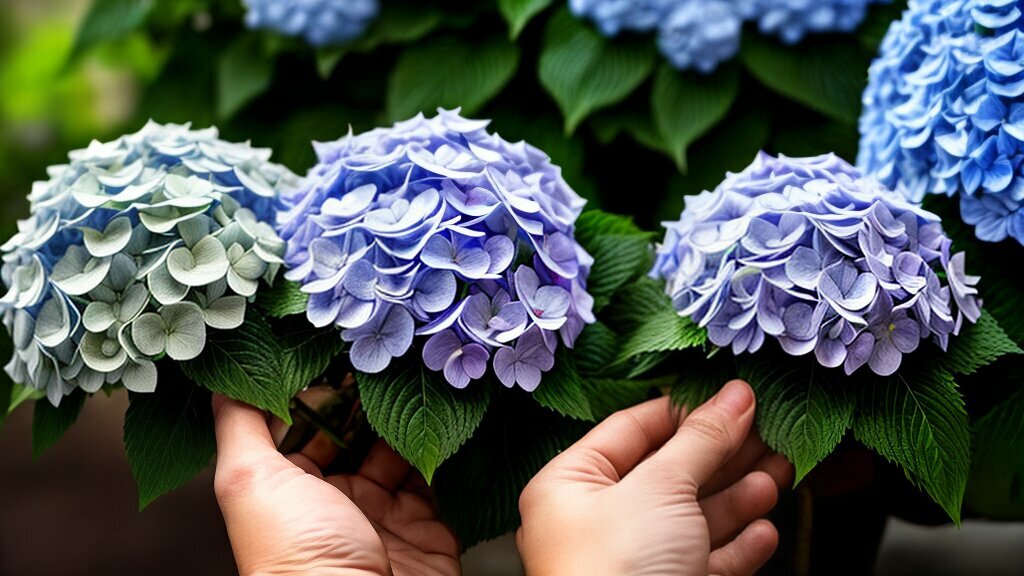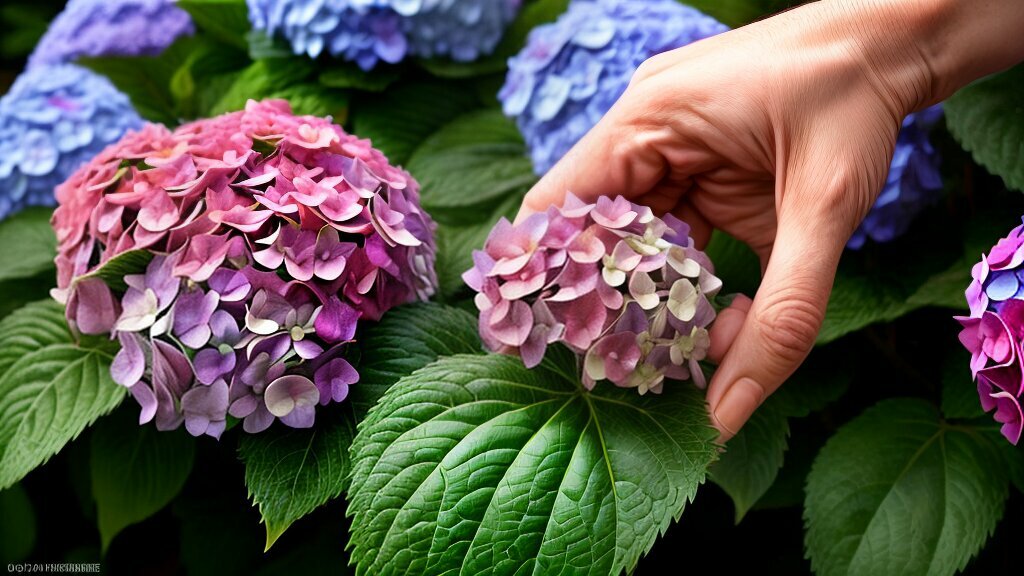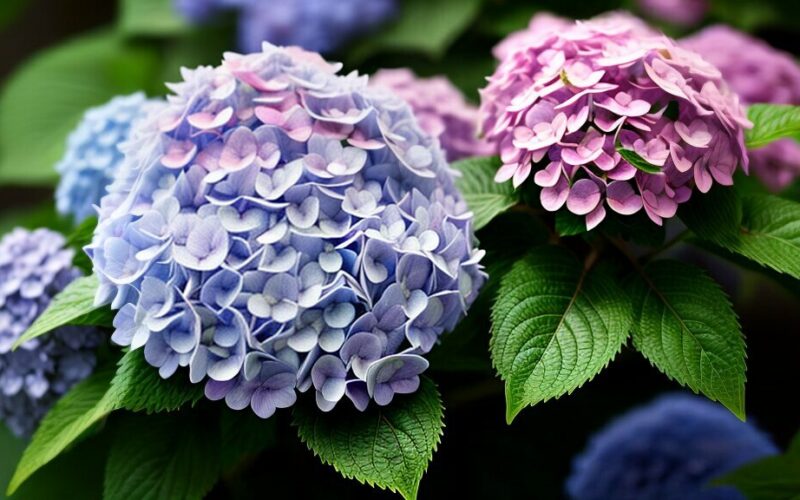If you’re a fan of beautiful hydrangea plants, you may wonder if they are safe to touch. While these plants are not necessarily poisonous, they can cause skin irritation and allergic reactions in some individuals. In this article, we will explore the potential dangers of handling hydrangeas and provide essential safety tips.
Key Takeaways
- Hydrangeas are not poisonous, but touching them can lead to skin irritations and allergic reactions.
- Contact dermatitis is a common skin condition caused by touching hydrangeas.
- Wearing gloves and taking precautions can help prevent skin irritation when handling hydrangeas.
- If you experience an allergic reaction after coming into contact with hydrangeas, seek medical attention immediately.
Understanding Hydrangea Toxicity and Skin Irritation
If you love hydrangeas and enjoy tending to them, it’s important to know that they can potentially cause skin irritations if you come in contact with them. The culprit behind the irritation is a chemical called “glycoside,” which is found in the leaves, flowers, and stem of the hydrangea plant.
Glycoside can be harmful to the skin, and its effects can range from mild to severe. When you touch the plant, glycoside may come into contact with your skin, and if you are particularly sensitive to it, you may experience an allergic reaction.
The most common skin irritation caused by hydrangeas is called “contact dermatitis.” If you have contact dermatitis, you may experience redness, itchiness, and swelling at the site of contact. In some cases, blisters may also appear.
| Signs of contact dermatitis: | What to do: |
|---|---|
| Redness, itchiness, and swelling at the site of contact | Wash the affected area with soap and water. If necessary, use an over-the-counter hydrocortisone cream to relieve inflammation. |
| Blisters | Do not pop the blister. Cover it with a sterile bandage and let it heal on its own. |
If you have a severe case of contact dermatitis, you should seek medical attention. Symptoms of severe contact dermatitis include severe swelling, fever, and difficulty breathing.
If you are unsure whether you are allergic to hydrangeas, test a small patch of skin before handling the plant. Apply the plant material to a small area of skin, such as the inside of your wrist, and wait 24 hours to see if you experience any reaction. If you do, avoid handling hydrangeas altogether.
Now that you understand the potential harm that hydrangeas can cause to your skin, you can take steps to protect yourself by wearing gloves when handling the plant. While hydrangeas are a beautiful addition to any garden, it’s important to handle them with care.
Precautions and Safety Measures
If you want to handle hydrangea plants without any danger to your skin, it is important to take some precautions and safety measures to ensure your safety.
Wear gloves: When working with hydrangeas, always wear gloves to protect your skin from coming into direct contact with the plant.
Use proper tools: It is important to use proper tools, such as pruning shears or scissors, to avoid touching the plant with your bare hands.
Avoid contact: Try to avoid touching the plant with your bare hands as much as possible, particularly if you have sensitive skin.
Wash hands: After handling hydrangeas, make sure to wash your hands thoroughly with soap and water.
Seek medical attention: If you experience any skin irritation or allergic reactions to hydrangeas, seek medical attention immediately.
By following these simple precautions and safety measures, you can safely handle hydrangea plants without putting your skin at risk.

Allergic Reactions to Hydrangeas
If you experience any symptoms after coming into contact with hydrangeas, it is possible that you may be having an allergic reaction. The severity of the reaction may vary depending on the level of exposure and sensitivity to the plant. Symptoms may include:
- Rashes
- Hives
- Itching
- Swelling
- Difficulty breathing
- Wheezing
- Loss of consciousness (in severe cases)
If you suspect that you are having an allergic reaction to hydrangeas, it is important to seek medical attention immediately. Your doctor may recommend antihistamines, steroids, or other medications to relieve symptoms and prevent complications.
It is also important to avoid handling hydrangeas if you know you are allergic to them. If you are unsure whether you are allergic, consider wearing gloves and protective clothing when handling the plant or simply avoid contact altogether.
Remember, safety should always come first when working with plants and flowers. By taking the necessary precautions and being aware of potential hazards, you can enjoy the beauty of hydrangeas without putting yourself at risk.

Conclusion
After exploring the potential toxicity and skin irritations caused by touching hydrangeas, it’s important to remember to handle them with care. Always wear gloves and use proper tools when working with these plants.
If you experience any skin irritations or symptoms of an allergic reaction after coming into contact with hydrangeas, seek medical attention immediately. It’s better to be safe than sorry.
By taking necessary precautions and being aware of the potential dangers of hydrangeas, you can enjoy these beautiful plants without putting yourself at risk.







